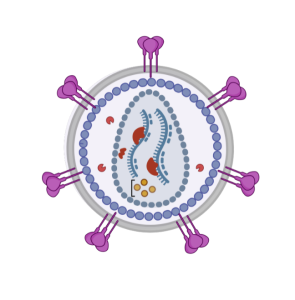Ubiquitin proteasome pathway:
The ubiquitin proteasome pathway (UPP) regulates various cellular functions by removing damaged, misfolded, or excess proteins. The ubiquitin proteasome pathway is the main way for intracellular protein degradation, and ubiquitination requires three different steps to obtain multi ubiquitination products that are easily recognized by proteasomes. The first step is to activate the ubiquitin molecule by ubiquitin E1 ubiquitin activating enzyme. Then, the activated ubiquitin is transferred to the ubiquitin coupled E2 ubiquitin binding enzyme, and the E3 ubiquitin ligase connects the ubiquitin molecule to the protein. This process is repeated multiple times until a multi ubiquitin chain appears, and then the protein is targeted to the proteasome for degradation.
The 26S proteasome is a multi protein complex composed of one or two 19S regulatory subunits at both ends of the 20S catalytic core and 20S core. The 19S subunit binds to the polyubiquitin chain and cleaves it with the target protein. Then the protein passes through the 20S core, where it is degraded into small oligopeptides with less than 25 amino acids. The 19S subunit is typically located on both sides of the 20S core. However, the 20S core can also be used alone to induce ubiquitin independent protein degradation. The core is a barrel shaped structure composed of four heptamer rings. Two alpha rings are sandwiched between two beta rings. Each beta loop contains three protein degradation active sites: chymotrypsin like (β 5), trypsin like (β 2), and caspase like (β 1). The chymotrypsin like site on β 5 is the main target of proteasome inhibitors, although other trypsin and caspase like sites are also inhibited at higher drug concentrations.
picture
Proteasome structure (Ana T Nunes. 2017) Semin Oncol)
Clinical development of proteasome inhibitors:
Initially, proteasome inhibitors were developed for the prevention of cancer-related diseases. However, in preclinical studies, their role in promoting apoptosis in cancer cell lines has been significant. Therefore, bortezomib was approved for use in multiple myeloma in 2003, followed by carfilzomib in 2012 and ixazomib in 2015. These proteasome inhibitors mainly act on the chymotrypsin like β 5 subunit. At higher concentrations, these proteasome inhibitors also inhibit trypsin like (β 2) and caspase like (β 1) subunits. These three compounds have shown activity in multiple myeloma, and bortezomib is also suitable for the treatment of mantle cell lymphoma.
picture
Three structures of proteasome inhibitors (Ana T Nunes. 2017) Semin Oncol)
The well-known structure of MG132 is as follows:
picture
MG132 structure
In 2003, Richardson et al. reported a phase 2 clinical trial on 202 patients with relapsed and refractory multiple myeloma, and found that bortezomib treatment resulted in a 35% remission rate. Subsequently, a randomized controlled trial was conducted to compare bortezomib with high-dose dexamethasone in the treatment of recurrent multiple myeloma. Here, the reaction rate of bortezomib is 38%, while the reaction rate of dexamethasone is 18% (p<0.001), with median times of 6.22 months and 3.49 months, respectively (risk ratio of 0.55). Since then, bortezomib has been used in various combination therapies for first-line treatment and for relapsed, refractory multiple myeloma related diseases, continuously improving the overall survival of patients.
The combination of cabozomib and dexamethasone has been approved for the treatment of recurrent or refractory multiple myeloma. Its effect is similar to that of bortezomib, except that it irreversibly and selectively binds to proteasomes. The toxicity characteristics are slightly different, with less peripheral neuropathy, more decreased blood cells, and rare pulmonary and cardiac toxicity. As a monotherapy for patients with relapsed and refractory multiple myeloma, in a phase II study, a total of 266 patients had an overall response rate of 23.7% and a median overall survival time of 15.6 months. Caffezomi has also been proven effective in combination therapy with lenalidomide or pomalidomide and dexamethasone.
Isazomi is the only oral proteasome inhibitor that can be used in combination with lenalidomide and dexamethasone for patients with relapsed and refractory multiple myeloma. Among 722 patients, the median progression free survival (PFS) was 20.6 months, compared to 14.7 months (HR 0.74 p<0.01), and was randomly assigned to receive either isazomi combined with lenalidomide and dexamethasone or placebo combined with lenalidomide and dexamethasone. Similar to bortezomib, isazomi is a reversible inhibitor with side effects such as reduced blood cells.
Share on:
Facebook
Twitter
Pinterest
WhatsApp
Recent posts
We recommend


